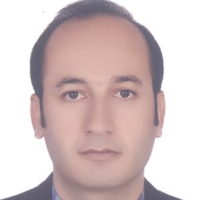Persuasive Maps and the distortion of ethnic reality in IranA Case study: Kurd, Turk, Arab and Baloch ethnics
Author(s):
Abstract:
1-Introduction Throughout the last decades, ethnicity in Iran has been led towards anti-Iranian and eccentric thoughts. In particular, since the Islamic revolution, the emergence of different levels of separatist movements in ethnic and frontier provinces has been a challenge for the government. The separatist ethnic forces use different tools for showing their claims; one of which is geographical maps. Since geographical maps affect people’s mental map of their sorroundings, i.e. people’s perception of the world and the creation and maintenance of specific discourses about it, and since those maps do not always represent reality, the present study intends to critically investigate the maps drawn by four ethnic groups of Kurd, Arab, Turk, and Balouch. 2-Theoretical framework There is a descriptive and an ontological definition for every map. Maps also differ from each other based on their types, i.e. whether they are scientific or educational, persuasive or advertising. From a descriptive point of view, a map is the orthogonal image of the earth on a flat surface whose size has been decreased to a certain proportion i.e. the scale. There is no discripancy among scholars concerning this definition. This viewpoint can be referred to as the positivist view in which it is believed that a map is a neutral phenomenon which, like a mirror, reflects the reality of the earth. However, from an ontological point of view, a map is an abstract reflection of concrete reality whose layout or motive comes from realistic political or military interests. In this view, a map is viewed from a critical-philosophical standpoint. The critical view considers a map as a medium which conveys messages according to the goals and intentions of its developers or clients and is not a neutral phenomenon. According to this view, today’s maps have lost their innocence, and through the use of color, change of size, limitation of space, and other common methods of surveying, create a picture of the world, countries, and land which are not always true. From the perspective of post-modern scholars, maps construct reality. 3-Methodology The present study has a critical approach and uses a descriptive-analytical method. The required data were collected through library research from valid hard and soft references, and then were analyzed qualitatively. The research question is: “what are the persuasive features of maps drawn by the four ethnic groups of Kurd, Arab, Turk, and Balouch?”4-Discussion Apart from the general maps of the status of Iranian ethnic groups developed both within and outside Iran, the ethnic-oriented elites of the country have also drawn some maps. They seek to reach their goals of enhancing decentralized forces and promote issues such as autonomy, etc. by using surveying techniques like selection, color, size, title and name of the maps. The common point about maps drawn from Kurdish, Arab, Turkish, and Balouchi areas of Iran is that these maps follow special goals by centralizing the given ethnic group, manipulating the location of the group and expanding it to important and specific areas. The maps drawn from Kurdish areas of Iran try to distort reality and enhance the nationalistic feelings of Kurds by stretching those areas to Persian Gulf and Mediterranean areas which have geo-strategic, geopolitical, and geo-economic importance by using colors, lines and specific symbols. The maps drawn from Arab areas of Iran consider the southern parts of Iran as belonging to spurious Arabia. This important and strategic place, besides having situated within itself the strategic Hormoz strait as the economic route and path of world energy, has many strategic islands, great sources of energy, etc. In fact, developers of these maps and those who order them intend to decompose Iran and separate the vital and strategic northern coasts of Persian Gulf and Oman Sea and weaken the country economically. The maps drawn from Turkish areas of Iran have persuasive nature by using dark colors and manipulating and expanding those areas in an exaggerated way. The maps of Balouch areas consider a large part of Iranian coasts from Hormoz strait to Guater Gulf and a large part of Pakistan coasts as part of large Balouchistan and deny the right of access to free seas from these two countries. 5- Conclusion and Suggestions Throughout past decades, various factors have led to different levels of separatist movements. One of the major tools showing the claims of ethnic separatist forces or their trans-regional supporters is geographical maps. The investigation of some of these maps in the present study revealed that each somehow tries to distort the reality. These maps are persuasive in nature by centralizing the territory of the given ethnic group, manipulating their position, expanding their area, stretching them to politically and economically strategic areas, and using specific names, colors, and symbols and try to distort the reality for their own intentions and purposes.
Keywords:
map , persuasive maps , ethnicity , Iran
Language:
Persian
Published:
Journal Of Geography and Regional Development Reseach Journal, Volume:11 Issue: 2, 2014
Page:
1
magiran.com/p1278026
دانلود و مطالعه متن این مقاله با یکی از روشهای زیر امکان پذیر است:
اشتراک شخصی
با عضویت و پرداخت آنلاین حق اشتراک یکساله به مبلغ 1,390,000ريال میتوانید 70 عنوان مطلب دانلود کنید!
اشتراک سازمانی
به کتابخانه دانشگاه یا محل کار خود پیشنهاد کنید تا اشتراک سازمانی این پایگاه را برای دسترسی نامحدود همه کاربران به متن مطالب تهیه نمایند!
توجه!
- حق عضویت دریافتی صرف حمایت از نشریات عضو و نگهداری، تکمیل و توسعه مگیران میشود.
- پرداخت حق اشتراک و دانلود مقالات اجازه بازنشر آن در سایر رسانههای چاپی و دیجیتال را به کاربر نمیدهد.
In order to view content subscription is required
Personal subscription
Subscribe magiran.com for 70 € euros via PayPal and download 70 articles during a year.
Organization subscription
Please contact us to subscribe your university or library for unlimited access!


